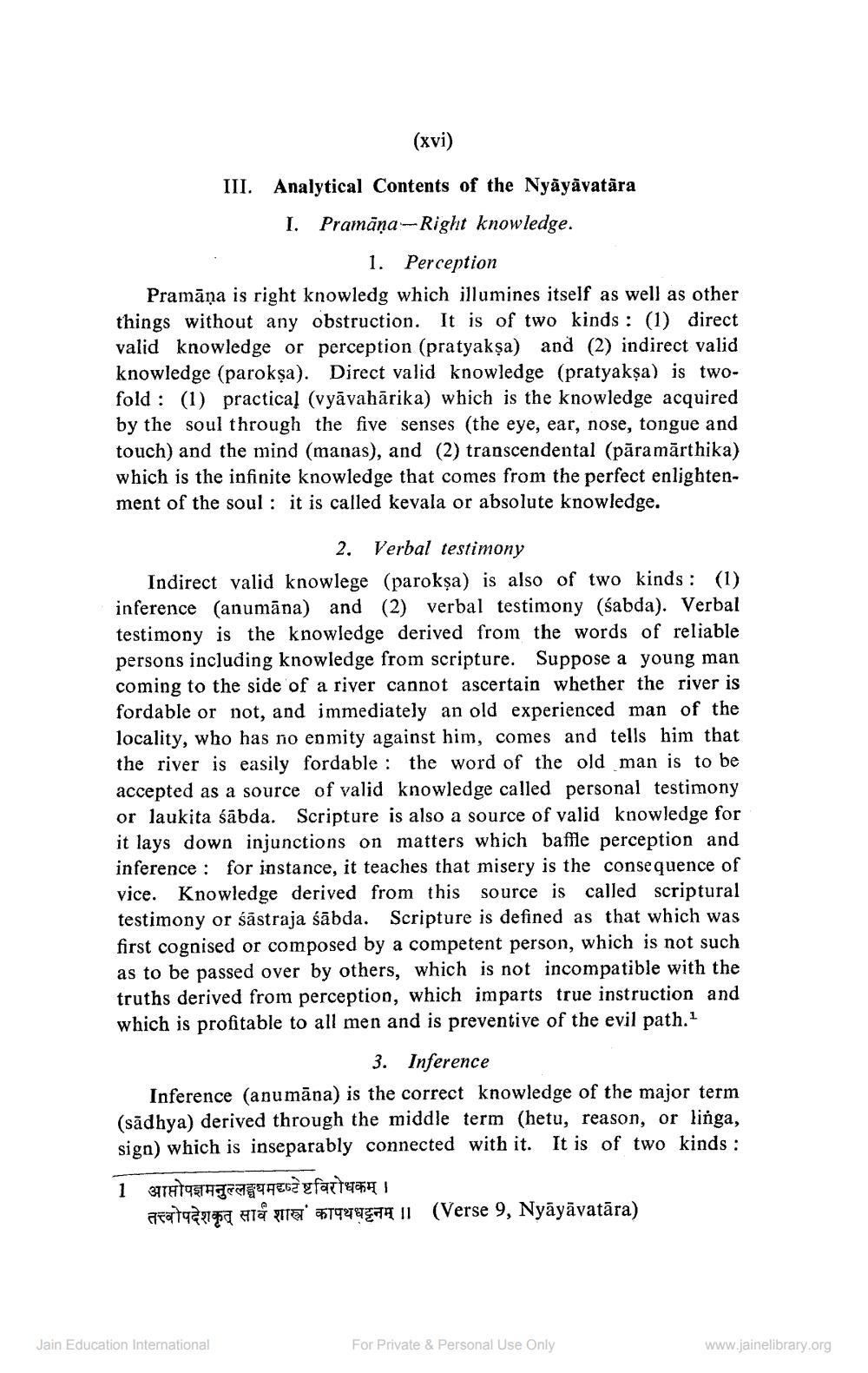________________
(xvi)
III. Analytical Contents of the Nyāyāvatāra I. Pramāņa-Right knowledge.
1. Perception Pramāna is right knowledg which illumines itself as well as other things without any obstruction. It is of two kinds : (1) direct valid knowledge or perception (pratyakşa) and (2) indirect valid knowledge (paroksa). Direct valid knowledge (pratyakşa) is twofold : (1) practical (vyāvahārika) which is the knowledge acquired by the soul through the five senses (the eye, ear, nose, tongue and touch) and the mind (manas), and (2) transcendental (pāramārthika) which is the infinite knowledge that comes from the perfect enlightenment of the soul : it is called kevala or absolute knowledge.
2. Verbal testimony Indirect valid knowlege (parokşa) is also of two kinds : (1) inference (anumāna) and (2) verbal testimony (sabda). Verbal testimony is the knowledge derived from the words of reliable persons including knowledge from scripture. Suppose a young man coming to the side of a river cannot ascertain whether the river is fordable or not, and immediately an old experienced man of the locality, who has no enmity against him, comes and tells him that the river is easily fordable : the word of the old man is to be accepted as a source of valid knowledge called personal testimony or laukita śābda. Scripture is also a source of valid knowledge for it lays down injunctions on matters which baffle perception and inference : for instance, it teaches that misery is the consequence of vice. Knowledge derived from this source is called scriptural testimony or śāstraja śābda. Scripture is defined as that which was first cognised or composed by a competent person, which is not such as to be passed over by others, which is not incompatible with the truths derived from perception, which imparts true instruction and which is profitable to all men and is preventive of the evil path.1
3. Inference Inference (anumāna) is the correct knowledge of the major term (sādhya) derived through the middle term (hetu, reason, or linga, sign) which is inseparably connected with it. It is of two kinds :
1 आप्तोपशमनुल्लङ्घयमदृष्टेष्टविरोधकम् ।
aralaru atá gira' 579279574 11 (Verse 9, Nyāyāvatāra)
Jain Education International
For Private & Personal Use Only
www.jainelibrary.org




